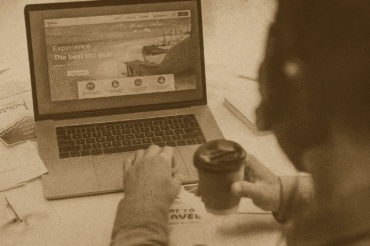Hiring a software company can be a strategic decision that accelerates the growth of a business - or a costly mistake with long-lasting technical and financial consequences. The success of a digital project starts with the right choice of technology partner.
In this article, we identify the most common mistakes committed by companies and entrepreneurs when hiring a software house, and we explain how to avoid them in a practical way.
1. choosing only the lowest price
Error: Going for the cheapest quote, without considering quality, methodology or experience.
Often, what's cheapest is expensive. Poorly executed projects result in rework, delays, poor performance and even safety risks.
How to avoid it:
-
Requests detailed proposals (not just global prices).
-
Analyses portfolios and asks for case studies.
-
Check that the budget covers maintenance, testing, documentation and QA.
Lack of clarity in the requirements
Error: Start the project without clearly defining what you want to build, with vague objectives like "make an Uber-like app".
Without clear requirements, it is impossible to correctly estimate deadlines, costs or functionalities.
How to avoid it:
-
Do an initial needs assessment with the company.
-
Prioritise companies that help you refine your scope with workshops, prototypes or MVPs.
-
Start small: one MVP validated is better than a poorly planned giant project.
❌ 3. ignoring the work methodology
Error: Don't question how the company manages projects, communicates or delivers value.
Many failures come from poorly defined processes: delays, bugs, incomplete deliveries or lack of visibility.
How to avoid it:
-
Prefer companies that use agile methodologies (such as Scrum or Kanban).
-
Ask for real examples of how they monitor projects and sprints.
-
It ensures that there are regular meetings, incremental deliveries and transparency.
Lack of involvement during the project
Error: Thinking that "I pay and they do everything", without keeping up with developments.
Software is built to solve your problem - but if you're not there to validate and correct course, you run the risk of having something that doesn't fit.
How to avoid it:
-
Participate actively: constant feedback is essential.
-
Test partial versions with real users (if possible).
-
Choose partners who involve you in the process (fortnightly demo, test environment, direct communication with the technical team).
5. not considering scalability and maintenance
Error: Focusing only on "working now", without thinking about how to scale, update or maintain the software in the future.
Poorly designed solutions become difficult (and expensive) to scale or modify.
How to avoid it:
-
Ask how the company plans scalabilitysecurity and modularity.
-
Ensure that the code is documented and that you have access to the repository.
-
Define now who will be responsible for maintenance and support after launch.
✅ Conclusion: how to make the right choice
Hiring a software company is more than just a transaction - it's the start of a new life. strategic partnership. Choose a partner who understands your business, communicates clearly and helps you turn ideas into real solutions, based on technology but also on trust.






